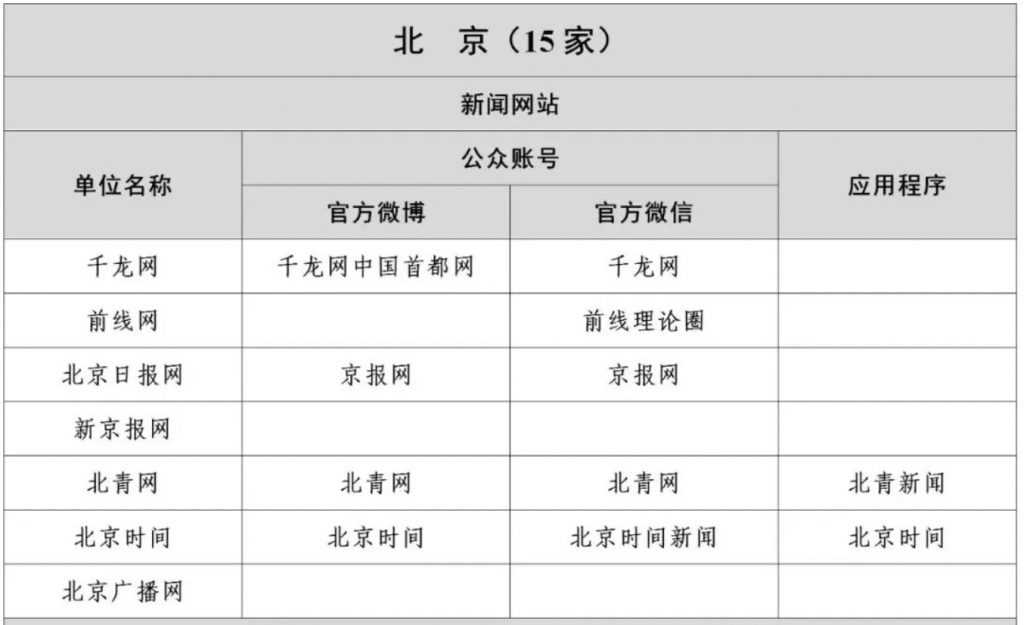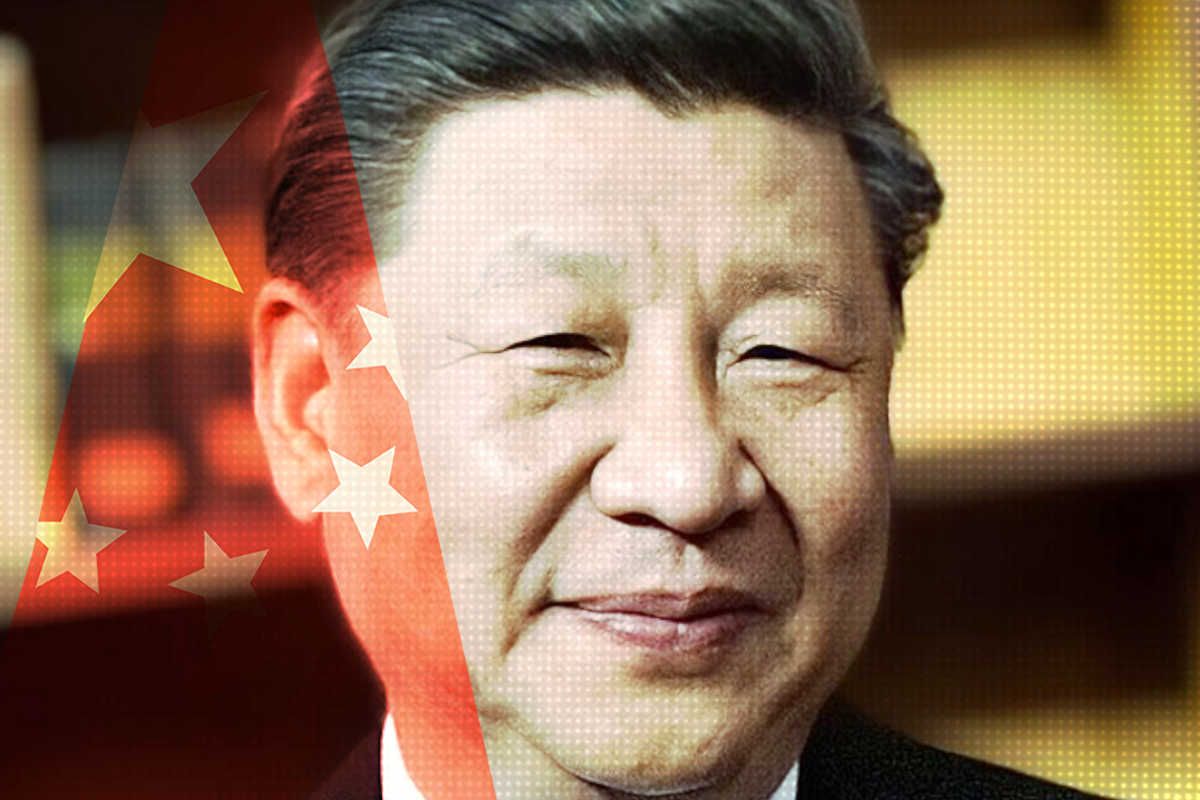Tracking Control
China Updates Rules on News Reposting
It has long been a basic maxim of public opinion control under the Chinese Communist Party that one of the chief means of restricting information is to limit those outlets having the right to report the news. The state-granted privileges allowing media to conduct news reporting have been referred to as “news gathering rights,” or xinwen caifangquan (新闻采访权), and these rights have been vested with trusted media that are in various ways tethered to official institutions.
As the internet became increasingly central in the distribution and consumption of information in China, the authorities maintained strict limitations on “news gathering rights.” For example, when the Regulations on the Administration of Internet News Information Services (互联网新闻信息服务管理规定) were promulgated in 2005, they stipulated clearly that commercial news portals (such as Sina, Sohu and QQ) did not have “news interview rights” and therefore could not directly produce original news content. What properly licensed websites could do, however, was to repost, or zhuanzai (转载), news on current affairs.
In the chaotic world of the rapidly developing internet, now supercharged by social media and big data, it has been crucial for China’s leadership to maintain control over the process of zhuanzai. The hope, with the goal of ensuring CCP “guidance of public opinion,” is that news content remains clear at the source, produced by politically trusted sources, and that it does not become murky, or politically toxic, as it makes its way downstream through the expanding digital media terrain. One important means of mastering zhuanzai has been to clearly demarcate the sources of reposted news content that can be safely used.
The release yesterday by the Cyberspace Administration of China (CAC) of a new and updated version of its Internet News Information Source List (互联网新闻信息稿源单位名单) has precisely this goal in mind. The CAC document, an update of the first version released in July 2016, about five months after Xi Jinping’s speech urging a re-consolidation of CCP media controls, provides a comprehensive list of the news “units” – 1,356 in all – that are approved as “report sources,” or gaoyuan (稿源).
What does this mean? Essentially, the existence and enforcement of the list means that digital media of all stripes are prohibited from reposting current affairs and breaking news stories originating with sources other than those appearing on the “Source List,” including international media as well as public accounts on major platforms like WeChat and Weibo. Website and portals that do not keep strictly to the “Source List” in republishing news “will be punished according to law and regulations,” according to the CAC, which also said that it would closely watch “source units” (稿源单位), ensuring that they did not have “information security liability incidents and other issues.”
Why is the list being updated and released now? This is perhaps the more interesting question, given that these restrictions on sourcing of news stories are not particularly new. The CAC release, and coverage by the Party-state media, explains that the new “Source List” is about “adapting to the new situation, new changes and new demands of internet communication, further consolidating the foundation of internet communication management, and enriching the supply of internet news information.”
The “new situation” and “new changes” are really about the proliferation of digital media since the introduction of the last list in 2016, including the transformation of the Party-state led digital media infrastructure. One of the most noticeable differences between the two lists, in fact, is the addition today of many hundreds of official public accounts, or gongzhong zhanghao (公众账号), these being accounts operated by licensed and politically trusted media at the national, provincial and prefectural levels on China’s most crucial social media platforms, WeChat and Weibo.
The addition of public accounts is the primary reason why the sheer number of “units” on the updated “Source List” has expanded so notably since 2016. So what we can see here is an effort to maintain and reinforce the Party’s control over news at the source on the one hand, and to expand sourcing on the other hand in a way that befits broader changes to the country’s information landscape. So much activity in terms of official reporting and commentary – in other words, CCP and government messaging at all levels – is now happening through public accounts. Therefore, the scope of official sourcing must be expanded in order to authorize these “units” while also amplifying them, maintaining strict propaganda controls throughout.
Among the three notable priorities on the CAC list, named by the CAC itself and by Party-state media in their reporting today, control is not surprisingly at the top. The CAC notes, first and foremost, that the list “adds a group” (新增一批) of trusted sources, the goal having been to ensure that sources on the list “adhere to a correct political orientation, [adhere to] public opinion guidance, [adhere to the correct] value orientation.” Secondly, the CAC notes that the list “verifies a group” (核校一批), meaning simply that the list needed to be updated to reflect closures, name changes, changes to “sponsoring institutions” (official sponsors, essentially) and so on, resulting in some cases from institutional reform over the past five years.
Finally, the CAC notes that the new list “eliminates a group” (剔除一批). Listen in as it explains this key priority:
Units from the 2016 version of the source list that are no longer eligible, have poor regular performance, or lack influence have been removed from the list to effectively maintain its seriousness and credibility.
Define “seriousness” and “credibility.”
In fact, the absences themselves offer the best explanation of how the CAC has applied its standard of credibility and seriousness. Scrolling down past the expanded list of “central news websites” and “central news units,” past the likes of the People’s Daily and Xinhua News Agency, and their various websites and public accounts, then past the list for CCP and government organs and other official organizations, we come at last to the group from Beijing – the first of a long string of listings categorized by province and municipality.
On the 2021 “Source List” for Beijing, there are a total of 15 media units, including seven websites and eight other news organizations. The list of websites include those for the official Beijing Daily (北京日报网), The Beijing News (新京报网), the website of the Beijing chapter of the Chinese Communist Youth League (北青网), and so on.

These websites are all to be expected, and we can note that all but two (The Beijing News and Beijing News Radio) now have official WeChat public accounts that are also authorized sources for zhuanzai.
But if we refer to the 2016 “Source List,” we immediately find our first instance of a media unit that seems to belong to the “elimination” group. The website in question is Caixin Online (财新网), regarded by many readers outside China, and certainly inside too, as one of the country’s most credible and serious sources of news reporting.

In fact, Caixin, which was founded in 2009 by the highly-respected editor Hu Shuli (胡舒立), has itself sought to prevent the zhuanzai of its content without permission, and much the outlet’s coverage is paywalled. Nevertheless, the outlet’s absence from the 2021 “Source List” effectively means that its news content cannot be shared by other outlets even if permission has been secured from Caixin.
Bloomberg has reported this morning, just as this short analysis was wrapping up, that the Caixin exclusion amounts to an “ouster,” and that the move “means its articles cannot appear on the internet platforms such as Sina.com that are popular ways for the Chinese public to consume news.” This may risk an overstatement of the significance of the exclusion for Caixin, for the reasons I just mentioned. This “Source List” has little to do with curbs the outlet might face as it attempts to report breaking news stories, or to carry out in-depth investigative reporting.
But whatever the case, the exclusion is certainly indicative of the Party’s continued consolidation of control over the upstream and downstream distribution of news and information in China.





















